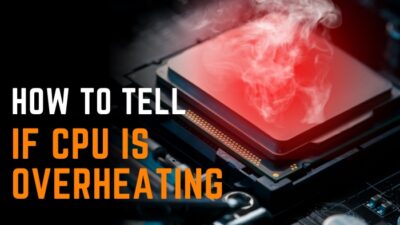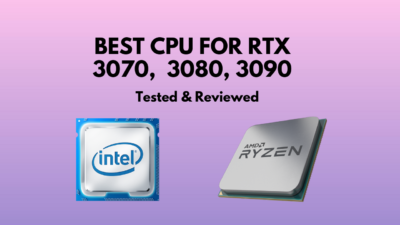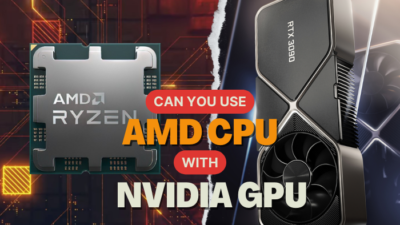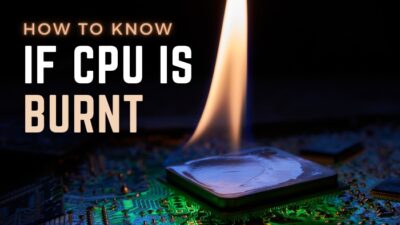A CPU and a PCIe are both power cables that supply electricity to the CPU and GPU. They both appear identical, which causes users to be confused and wonder if they are the same cable.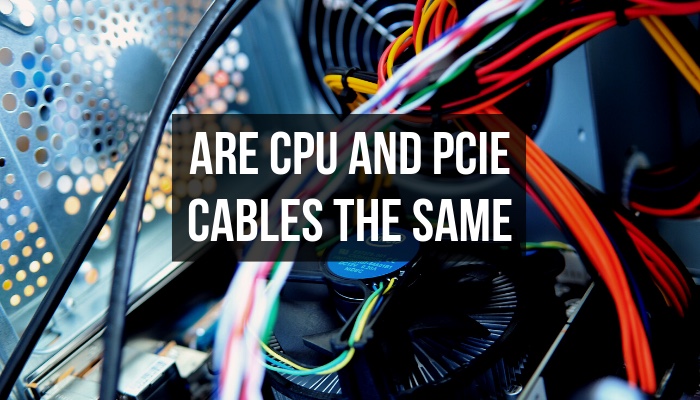
In this article, I’ll answer an age-old question if CPU and PCIe cables are transferable. Besides, I’ll demonstrate the key distinctions between them later on.
Let’s get started.
Are CPU and PCIe Cables Interchangeable?
No, CPU and PCIe wires are not interchangeable. These cable connectors carry the same amount of electricity, and their appearance is similar, but their working principles vary. Using a CPU cable as a PCIe cable causes damage to the computer’s components.
A CPU (Central Processing Unit) wire is commonly known as a power transfer cable. It delivers power from a power supply to a motherboard.
This cable also transmits data and energy through the front panel buttons to the motherboard, including the power switch, restart button, and LEDs. The Microprocessor cable is often a flat cable with multiple connectors, including 2-pin, 3-pin, and 4-pin connectors.
On the other hand, a PCIe (Peripheral Component Interconnect Express) cable is also called a graphic card cable.
This cable supplies power to the graphics card and allows data transmission between the GPU and the motherboard. PCIe cables are typically larger and feature more pins than CPU wires.
As a result of these discussions, we now understand that while the CPU and PCIe cable appears to be the same, their operating principles are not. So, you can’t use a PCIe cable for the CPU.
What are the Differences Between CPU and PCIe Cable?
CPU cables have GND on pins 1-4 and 12V on pins 5-8, so one side is all energy, and the other is all neutral. Comparatively, PCIe has one side that is entirely neutral and the other that is divided, with 12V on pins 1-3 and GND on pins 4–8.
The primary distinction between Processor and PCIe connectors is the kind of information transferred.
CPU connectors only transport data for front-panel controls and LEDs, while PCIe connectors transport data for more complicated operations like gaming, video processing, and other demanding graphics programs.
Furthermore, the cable diameter distinguishes the CPU and PCIe connectors. CPU wires are typically short because they link the front panel to the motherboard.
Compared to CPU cables, the PCIe cable has more pins. The CPU cables have six pins, but the PCIe cables have eight. 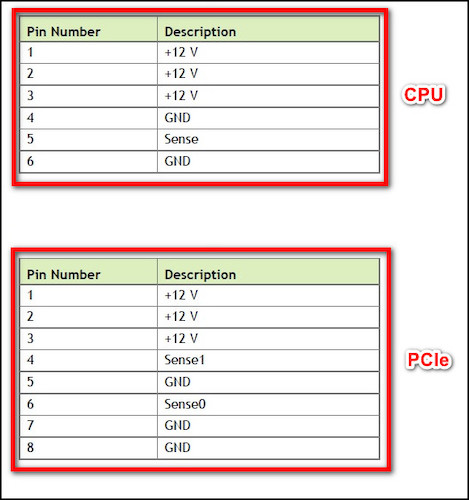
Are all 8-pin PCIe Cables the Same?
Even though all 8-pin PCIe cables appear to be the same, they are not. There are varieties of 8-pin wire, each with a distinct length, connection, and wattage capacity. The main distinction between 8-pin connections is the quantity of energy they can deliver.
A cable’s diameter refers to its thickness, and a broader gauge can accommodate higher power. The primary 8-pin PCIe connection is certified at 75 watts, with some relatively high connectors capable of handling up to 150 watts.
If a video card requires more power than the higher-watt wire can provide. However, a low-capacity cable can damage the graphics card.
Aside from power capability, the diameter of the wire and the kind of connections can also differ. Some cables have linear connectors, whereas others have angled connectors.
The size of the connection can also affect video card functionality, as a lengthier cable can lead to a decline in power delivery.
Are CPU and GPU Cables the Same?
No CPUs and GPU cables are not the same, and their working principle is different. Common names for CPU (Central Processing Unit) cords include front panel and I/O panel cables. A GPU (Graphics Processing Unit) wire, at the same time, is a power cord for a video card.
A CPU cable, front panel cable, or I/O panel cable supplies electricity to the power switch, restart button, hard disk drive LED, power LED, speakers, and other front-panel devices. The CPU wire is typically a 4-pin or 8-pin cable, dependent on the chipset.
A video card cable, which links to the graphics card, is commonly a 6-pin or 8-pin connection. Using a GPU cable instead of a CPU cable, or vice versa might cause harm to the mobo, video card, or both. So, you can’t use the graphics card power cable or VGA for the CPU.
Furthermore, the amount of pins on every cable varies, making it impossible to utilize a GPU connection on a system that needs a CPU wire or a CPU connection on a video card that requires a GPU cable.
Can I Use the CPU Power Cable to GPU?
No, users cannot connect a GPU to a CPU power cord. Manufacturers create separate power supplies for GPU and CPU since they require varied power output. GPUs consume more power than CPUs. If you’re using a CPU power cord to run a GPU, it may damage the GPU.
GPUs consume more energy than CPUs and therefore require a larger power supply.
Most current GPUs require at least one 8-pin or 6-pin power cable, which delivers additional power than a standard CPU cable.
The CPU power cable, commonly known as an ATX12V cable, is usually 4-pin and cannot supply enough power to drive a GPU. If you power a GPU from the CPU power line, it can damage the graphics card.
It is critical to utilize the appropriate power cord for your graphics card to run securely and adequately. Some Video card makers provide power connectors with their GPUs, but you can also buy them individually.
To know more about the GPU power cable, read our article and learn important information.
Conclusion
CPU and PCIe cables are not the same as they perform distinct functions. Besides, they are not interchangeable, and using the wrong cable type may lead to incorrect data transmission, voltage problems, and other challenges.
If you have anything in mind, drop your comment in the section below.

